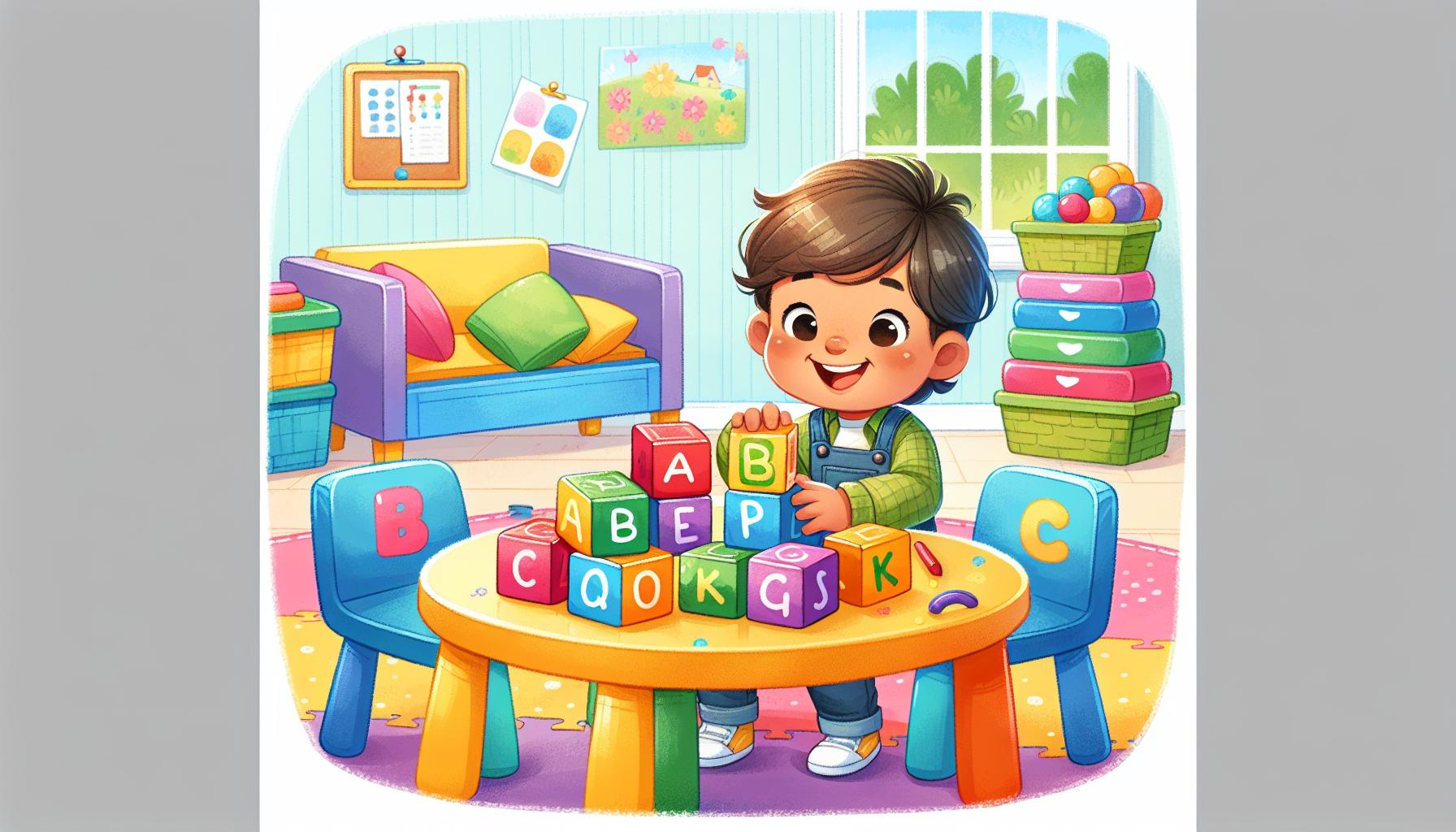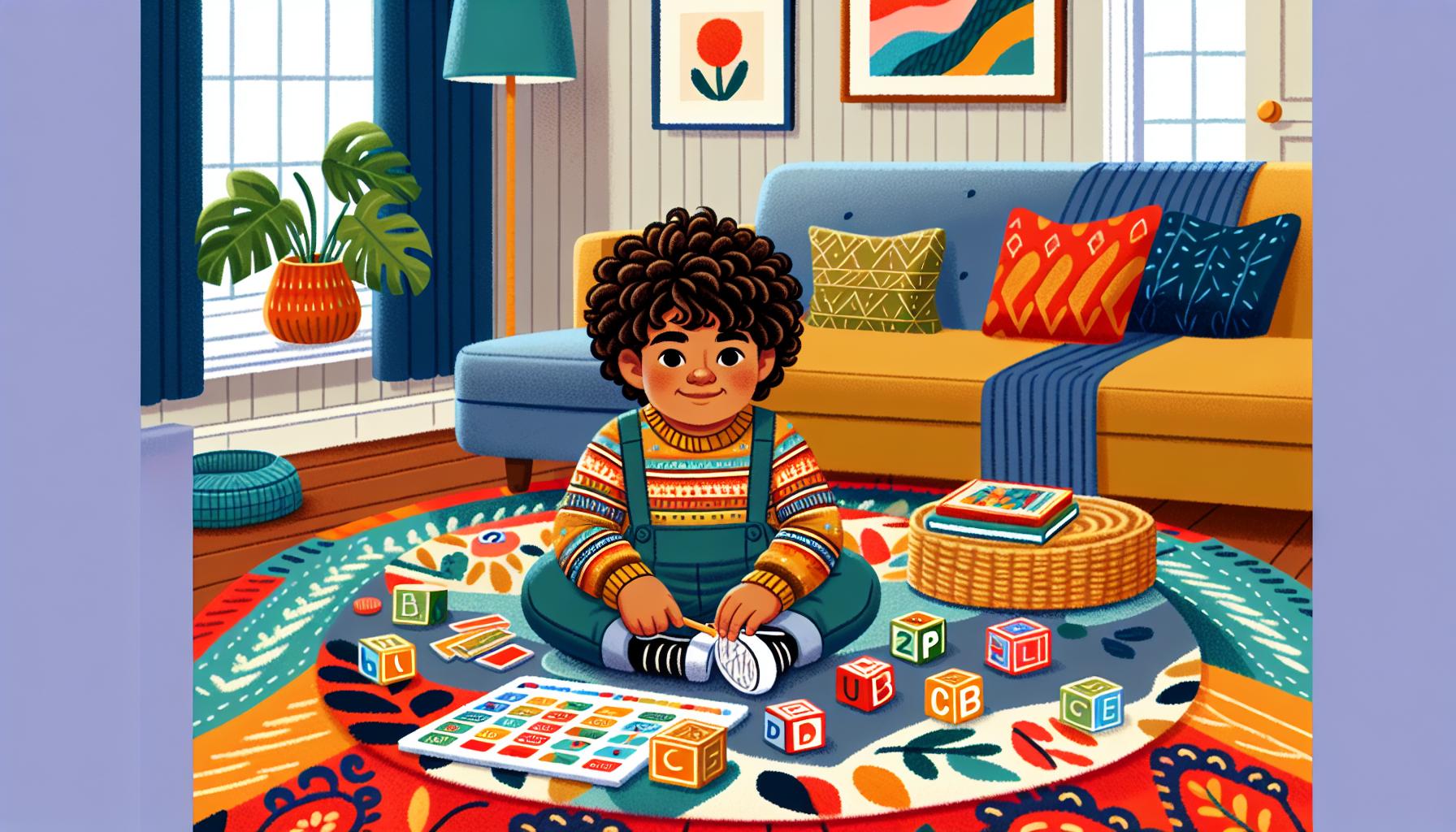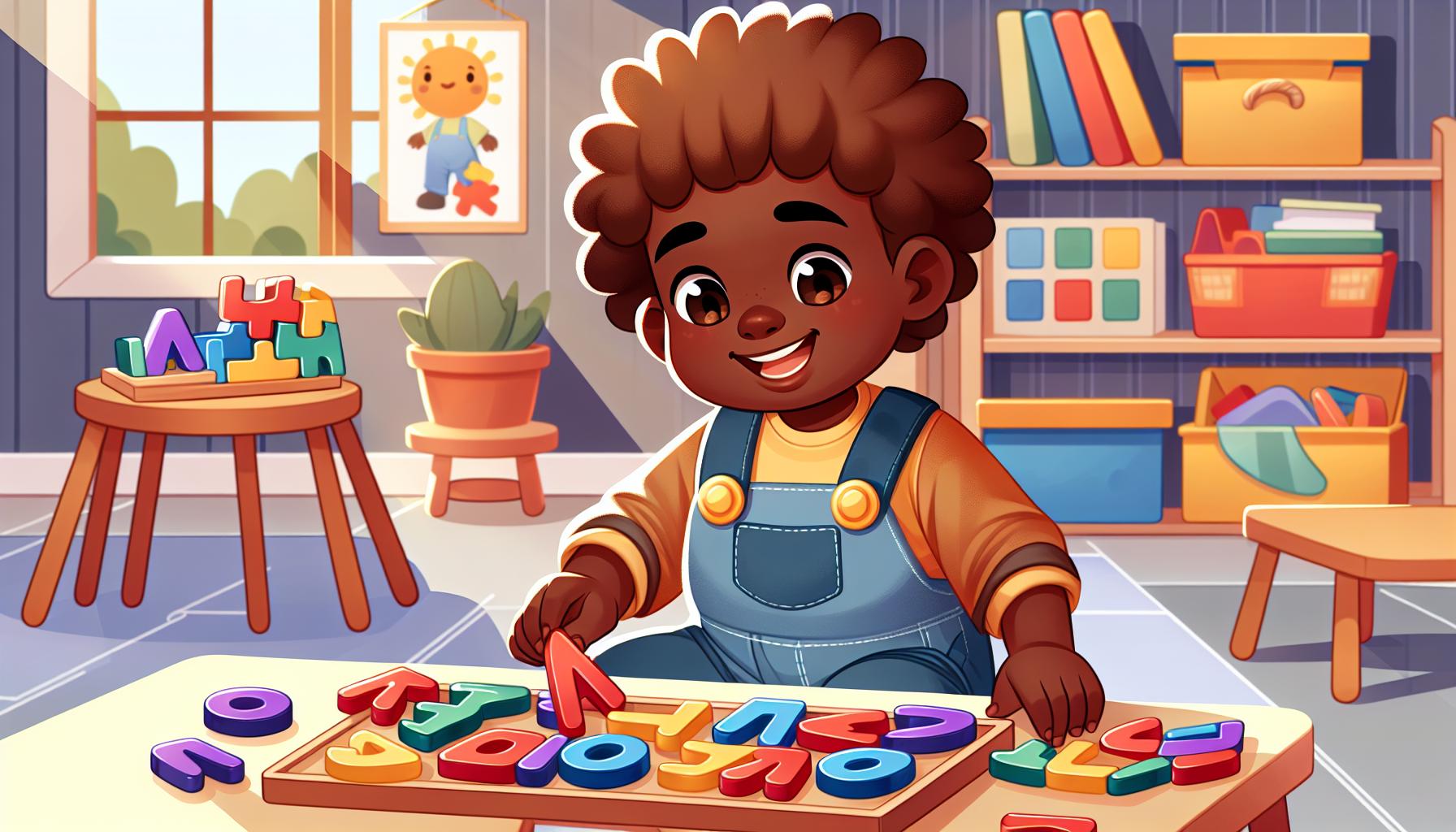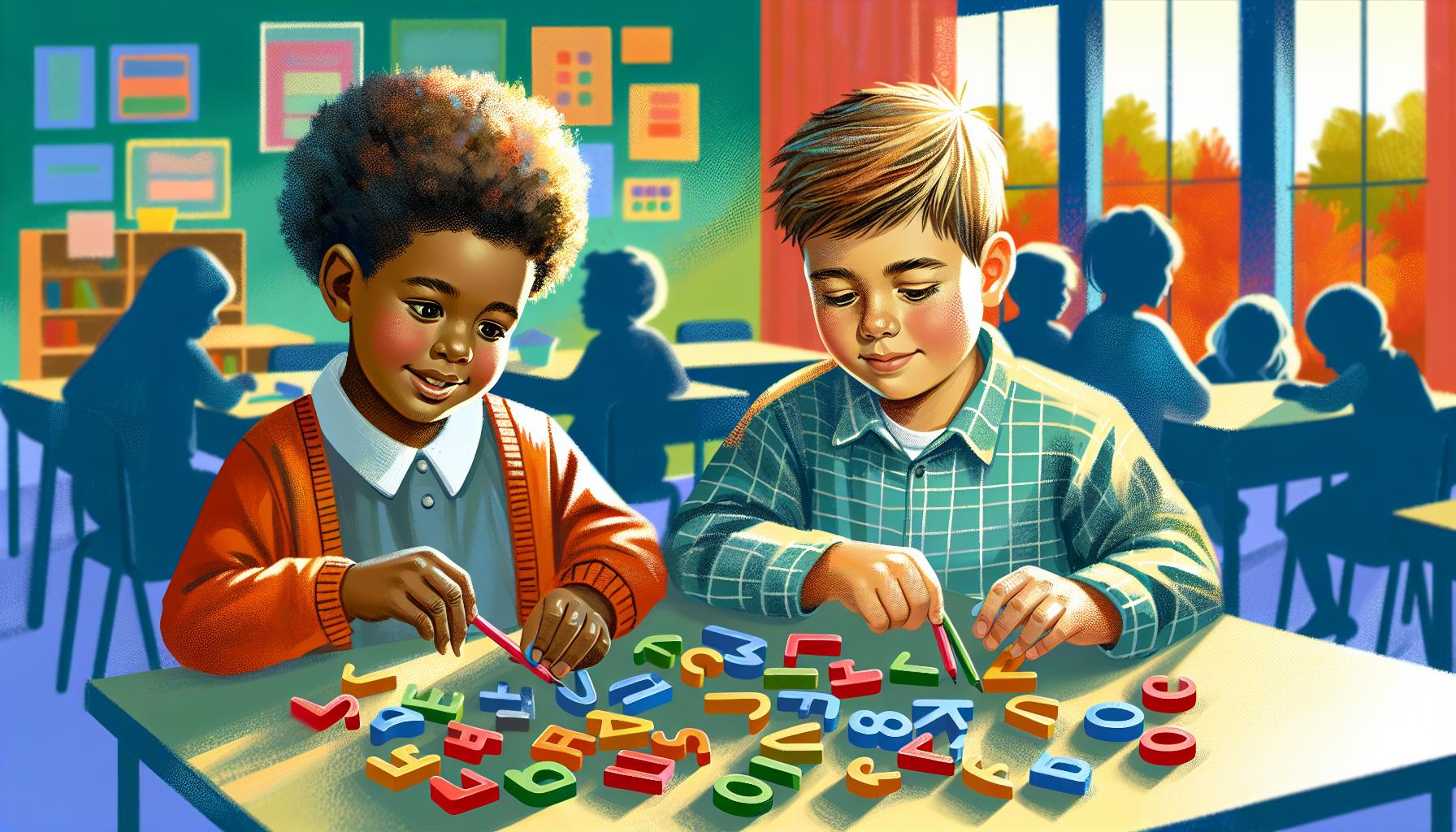Teaching kids the ABCs is one of the most exciting milestones in early childhood. It’s amazing to watch their curiosity grow as they begin to recognize letters and sounds. But as a parent or caregiver, you might wonder when kids typically start learning their ABCs and what’s considered “normal” for their age.
Every child develops at their own pace, but there are general patterns most kids follow when it comes to learning the alphabet. Understanding these stages can help you support their progress without unnecessary pressure. Whether they’re singing the alphabet song or identifying letters on a page, this journey is a big step toward literacy.
Understanding Early Childhood Development
Learning the alphabet connects closely to various stages of childhood growth. Children typically begin recognizing letters as their cognitive, language, and motor skills advance. On average, by age 2, toddlers can identify some alphabet letters, especially those in their names. By age 3, many children recognize more letters and begin associating them with sounds.
Each child’s learning pace aligns with their unique developmental timeline. Factors like regular exposure to reading, interactive activities, and positive reinforcement play key roles. For example, singing the ABC song or pointing out letters in picture books encourages familiarity.
Milestones serve as general benchmarks, not rigid timelines. Between ages 4 and 5, most children improve letter identification, write letters, and sometimes connect them with words. Providing engaging learning environments while respecting individual progress fosters confidence and retention.
When Do Kids Typically Learn Their ABCs?

Most children grasp the concept of the alphabet gradually, starting as early as age 2 and developing mastery by age 5. Individual differences in pace and exposure influence how quickly this process happens.
Average Age Milestones
At age 2, most kids begin recognizing a few letters, often those in their names. By age 3, many children identify several letters and may start linking them to their corresponding sounds. Around ages 4 and 5, children typically strengthen letter recognition, start writing them, and understand the full alphabet sequence.
Variations in Learning
Some children learn the ABCs earlier or later than the average range due to differences in exposure, interest, or developmental readiness. Those in language-rich environments, with regular reading and interactive alphabet activities, often learn faster. Conversely, children with limited access to enriching activities may take longer but catch up with consistent efforts and support.
Factors Influencing ABC Learning

A child’s ability to learn the alphabet depends on multiple factors that shape their exposure and engagement. These variables interact uniquely for each child, affecting the pace and method of learning.
Family Environment
The family environment shapes a child’s early literacy skills. Homes with frequent reading routines, access to books, and conversational engagement create language-rich settings. For instance, children exposed to daily bedtime stories often familiarize themselves with letter shapes and sounds earlier. Consistent encouragement and involvement from parents or siblings can further enhance a child’s interest in the alphabet.
Educational Tools and Resources
The availability of educational tools directly contributes to ABC learning. Interactive alphabet toys, flashcards, and apps with engaging visuals and sounds support retention. For example, tactile materials like magnetic letters can help kids associate letter shapes with their names. Access to libraries or quality learning centers offers additional opportunities to practice letter recognition.
Individual Learning Styles
Each child learns the ABCs uniquely, reflecting their individual learning style. Visual learners may excel with colorful illustrations or animations, while auditory learners benefit from songs or rhymes like the alphabet song. Kinesthetic learners might prefer hands-on resources like puzzles or tracing activities. Recognizing and leveraging these preferences allows personalized support for alphabet mastery.
How to Support ABC Learning at Home

Creating an engaging and supportive environment helps children develop alphabet skills effectively. Using diverse methods ensures learning feels enjoyable and natural.
Engaging Activities and Games
Incorporating playful activities reinforces letter recognition and retention. I use alphabet puzzles, magnetic letters, and matching games to make learning interactive. For example, I encourage children to form their names using magnetic letters or find matching uppercase and lowercase pairs.
Tracing letters in sand or shaving cream offers a sensory experience while building fine motor skills. Scavenger hunts, where kids find objects starting with specific letters, combine movement and learning. For digital engagement, I recommend well-designed apps with interactive ABC games that complement hands-on activities.
The Role of Storybooks and Songs
Storybooks with simple text and colorful illustrations naturally introduce letters and sounds. I read alphabet-themed books like “Chicka Chicka Boom Boom” to connect letters with engaging narratives. Pointing out letters in the text during shared reading sessions enhances recognition.
Songs and rhymes that emphasize the alphabet, such as the classic “ABC Song,” reinforce letter sequencing and sounds. Incorporating movement, like clapping to the beat, adds a kinesthetic element. By singing regularly and repeating rhythmic patterns, I help children remember letters more effectively.
Common Challenges and How to Overcome Them

Teaching kids the alphabet can present challenges, but understanding these difficulties helps address them effectively. Supporting children through these obstacles ensures steady progress in their literacy journey.
Attention Span Issues
Many young children struggle with maintaining focus during learning activities. Activities that are too long or repetitive can quickly lead to disengagement. To combat this, I recommend breaking lessons into shorter sessions—5 to 10 minutes—and incorporating a variety of hands-on activities. For example, using alphabet puzzles or magnetic letters keeps children engaged while reinforcing letter recognition. Rotating between physical movement, like singing the ABC song, and quieter tasks helps cater to different energy levels.
I also suggest integrating learning into daily routines. Pointing out letters on road signs or cereal boxes captures attention naturally. Offering praise for small achievements builds motivation and encourages longer focus over time.
Recognizing Learning Delays
Some children take longer to grasp the alphabet due to developmental delays or unique learning styles. Early signs of delays, such as difficulty recognizing letters by age 4 or struggling with letter-sound associations, may signal the need for additional attention. If I notice these patterns, I explore supportive strategies like multisensory activities, including tracing letters with fingers or drawing in sand.
I focus on creating tailored activities that align with a child’s strengths. For example, auditory learners may benefit from letter-sound songs, while visual learners might respond to colorful flashcards. If significant challenges persist, consulting with a pediatrician or early intervention specialist ensures appropriate support is provided. Early identification and intervention make a considerable difference in overcoming delays.
Conclusion
Teaching kids the ABCs is a rewarding journey that requires patience, creativity, and understanding. Every child learns at their own pace, and it’s important to celebrate small milestones along the way. By creating a fun, engaging, and supportive environment, you can help foster a love for learning that sets the foundation for future literacy skills.
Whether through playful activities, interactive tools, or daily routines, the key is to make the process enjoyable and pressure-free. With consistent support and encouragement, children can develop confidence and gradually master the alphabet in their own time.
Frequently Asked Questions
At what age should children start learning the alphabet?
Children often begin recognizing letters around age 2, especially those in their names. By age 3, many can identify more letters and associate them with sounds. Mastery typically occurs around ages 4 to 5, though every child develops at their own pace.
How can I help my child learn the alphabet at home?
You can use fun activities like alphabet puzzles, magnetic letters, and sensory games (e.g., tracing letters in sand). Reading storybooks, singing songs like the “ABC Song,” and involving your child in playful learning activities make the process engaging and effective.
What factors can influence how quickly a child learns the alphabet?
Factors include access to a language-rich environment, interactive educational tools, and the child’s individual learning style (visual, auditory, or kinesthetic). A supportive family environment and frequent reading or conversations also significantly boost literacy skills.
What if my child struggles to focus during alphabet learning?
Break lessons into short, manageable sessions with a mix of hands-on activities. Integrating the alphabet into daily routines and praising small achievements helps sustain focus and motivation.
Is it normal for children to learn the alphabet at different rates?
Yes, children develop at unique paces. While general milestones exist, differences in exposure, learning styles, and environments mean some kids may take longer. Patience and consistent support are key.
How can I address potential learning delays in alphabet recognition?
If you suspect developmental delays, try tailoring activities to your child’s learning style and seek early intervention if needed. Consulting a professional, such as a speech-language pathologist, can provide additional support and guidance.
Are apps and toys helpful in teaching the alphabet?
Yes, interactive apps, toys, and games can support alphabet learning by making it engaging and fun. They help with letter recognition, sound association, and retention when used alongside other activities like reading and singing.
What are some fun ways to build my child’s fine motor skills for writing the alphabet?
Encourage sensory activities such as tracing letters in sand, shaving cream, or with finger paints. Playing with building blocks or practicing with crayons and pencils also strengthens fine motor skills needed for writing.
How often should I read with my child to promote alphabet learning?
Reading daily, even for short periods, helps children associate letters with sounds and words. Alphabet-themed books and interactive reading sessions make learning more enjoyable and effective.
What should I do if my child dislikes learning the alphabet?
Make learning fun by turning it into a game or using activities they enjoy. Be patient, offer positive reinforcement, and focus on small achievements to build confidence and interest in letters.